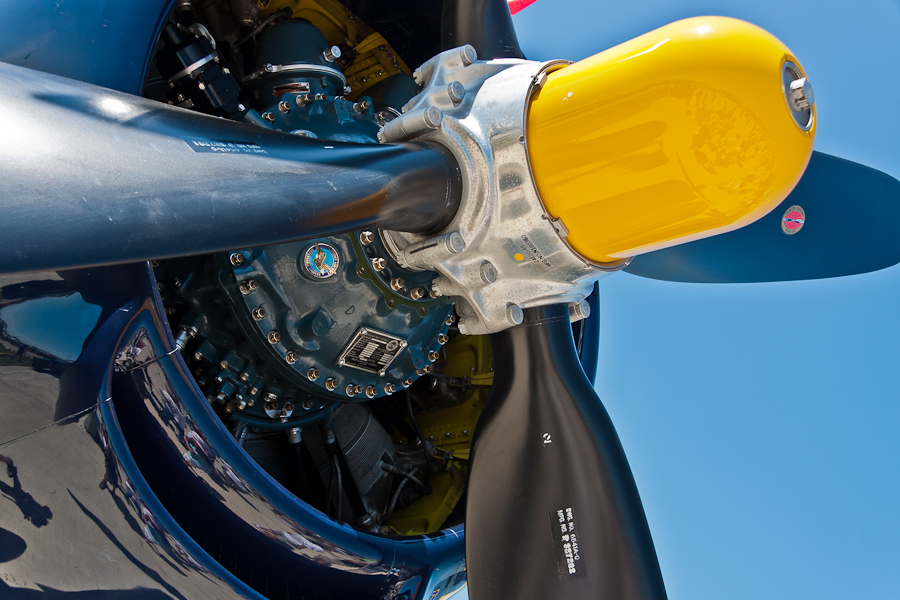Double Wasp


From its huge prop to its signature gullwing stance, the story of the F4U Corsair is the story of a plane designed around an engine. When originally designed in 1938, the Vought engineers were convinced that Pratt & Whitney’s brand-new R-2800 Double Wasp engine (rated at 2,000 HP) was the key to getting the sort of performance they were looking for out of a new fighter design.
This two-banked monster motor would spin a huge 13-foot, 4-inch three-bladed Hamilton Standard propeller; later Corsairs would get four-bladed props. This huge propeller introduced design challenges right away, as the plane also needed folding wings in order to support carrier operations. Designers rejected the super-long landing gear struts they’d have needed to keep the prop off the ground during takeoffs. Not only were they difficult to retract, they’d have to be reinforced tremendously to be strong enough for carrier landing.
A look beneath the cowling of this Corsair (right) shows the exhaust coiled around the second bank of cylinders and exiting out each side. The small air scoop beneath the front of the cowing and the four-bladed prop identify this Corsair as an F4-U4. This is one of the later variants, but it’s the one most commonly seen today.
Enter the Gull Wing
One of the hallmarks of wartime aircraft design was the apparent willingness to try just about any crazy design idea to see if it had merit. The trademark gull wing design of the Corsair is one of the most famous examples of this. Although it seems to be an odd solution at first glance, this simple change actually solved a number of problems. The landing gear, obviously, could be made in a much more conventional size, and a retract mechanism similar to the Curtiss P-40 allowed the struts to rotate 90 degrees during retraction. The unusual angle with which the wing met the body also improved aerodynamics in this area.

Unfortunately, the Corsair wound up suffering from some pretty twitchy handling characteristics at low speeds, and it never really reached its potential as a carrier-based fighter for the US Navy. The Marines employed it to great effect, however, and it found homes in several allied forces.
The photo below shows a Corsair taxiing while folding its wings. This entire operation was initiated from the cockpit and happened without the help of any ground crew, and the folding mechanism itself is fairly impressive. Remember that not only do the wings have to fold and extend, but when locked in flying position, not only does the wing have to support violent maneuvers, but the mechanisms for actuating the ailerons, flaps and trim tabs have to pass through the hinge, too.

Here are a couple more detail shots of the engine and exhaust:
If you enjoyed these photos, be sure to look through the EAA gallery for lots more photos of some great warbirds and a few contemporary planes, too.



One Comment